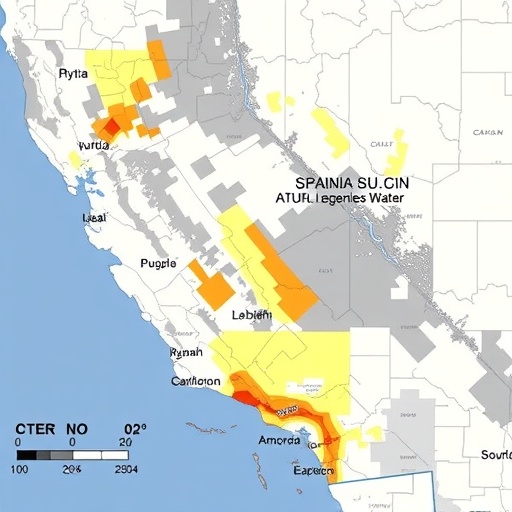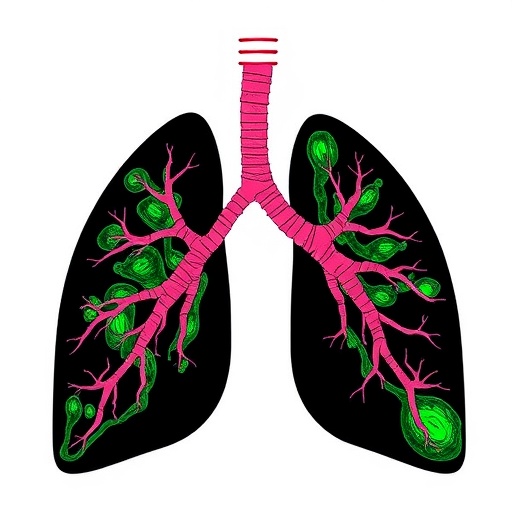In an unprecedented exploration of the intricate biochemical relationships influencing cardiovascular health, novel research has unveiled a significant correlation between systemic inflammation, fibrocalcific remodeling, and the pathophysiology of aortic stenosis. This condition, which affects a substantial portion of the elderly population, is characterized by the abnormal narrowing of the aortic valve opening, hindering blood flow from the heart. It is particularly notable for its complex interplay with several biological factors, most prominently Lipoprotein(a), a genetic variant of lipoprotein, which serves both structural and functional roles in the body.
Lipoprotein(a), commonly abbreviated as Lp(a), has emerged at the forefront of cardiovascular research due to its controversial yet pivotal role in systemic inflammation and cardiovascular diseases. Unlike other lipoproteins, Lp(a) carries apolipoprotein(a) that interacts with fibrinogen and is implicated in the atherogenic process, promoting thrombogenesis and fibrosis. Recent studies suggest that elevated levels of Lp(a) not only influence lipid metabolism but also incite inflammatory responses within the cardiovascular system. This has sparked a renewed interest in understanding how Lp(a) contributes to the pathogenesis of conditions like aortic stenosis.
One of the compelling aspects of the findings from Myasoedova et al. is the acknowledgment of sex as a crucial variable affecting Lp(a) levels and their subsequent physiological impact. Research indicates that women typically exhibit higher Lp(a) levels than men, especially post-menopause due to a decline in estrogen, which suggests hormonal influences on lipoprotein metabolism. This raises critical questions about the gender disparities seen in cardiovascular disease presentations and outcomes. The study highlights the necessity of incorporating sex as a significant factor when evaluating cardiovascular risk and therapeutic interventions, aiming to personalize treatment strategies based on this nuanced understanding.
Fibrocalcific remodeling is another focal point of this research. This term refers to the complex changes in valve morphology that occur as a response to chronic inflammation. It is characterized by the deposition of calcium and the proliferation of fibrous tissue in the aortic valve, leading to increased stiffness and decreased compliance. This remodeling process is often exacerbated by systemic inflammation, as seen in other forms of cardiovascular disease. The direct link between elevated inflammatory markers and the progression of fibrocalcific changes underlines the potential for targeting inflammatory pathways in therapeutic strategies against aortic stenosis.
Despite the rich insights provided by current research, the precise mechanisms through which Lp(a) modulates inflammation and consequent fibrocalcific remodeling remain areas warranting further investigation. Preliminary findings suggest that Lp(a) might signal through various immune pathways, triggering the activation of pro-inflammatory cytokines and endothelial dysfunction. Understanding these signaling pathways could unlock new targets for intervention, offering hope for the development of more effective treatments for patients suffering from aortic stenosis.
Aortic stenosis often presents with a myriad of symptoms, including exertional dyspnea, angina, and syncope, which are typically indicative of advanced stage disease. Importantly, the asymptomatic phase can span several years, complicating early diagnosis. Identifying reliable biomarkers for disease progression is critical. The implication of Lp(a) as a potential biomarker introduces an exciting avenue for clinicians seeking to identify at-risk populations before significant structural changes occur. This proactive approach could revolutionize patient management, moving society closer to predictive and preventative cardiovascular care.
Another intriguing layer to this study is the implications of valve morphology. Differentiating between trileaflet and bilihedral aortic valves has significant clinical relevance, as these anatomical variations may influence the hemodynamic burden on the heart and contribute to the variability in aortic stenosis progression among individuals. This emphasizes the necessity of considering individual anatomical and genetic profiles in risk assessments and treatment plans.
Researchers also raised the concept of therapeutic interventions aimed at lowering Lp(a) levels. While lifestyle modifications have minimal effects on Lp(a), new pharmacological advances, including specific antisense oligonucleotide therapies, are on the horizon. These therapies hold promise not only in reducing Lp(a) levels but also in mitigating associated inflammatory risk, potentially slowing the progression of aortic stenosis and improving patients’ quality of life.
Furthermore, the study also discusses the effect of systemic inflammation beyond the local pathology of the aortic valve. Chronic inflammation is now characterized as a contributor to the systemic burden of comorbidities commonly seen in patients with aortic stenosis—such as hypertension and diabetes. This interconnectedness of conditions demands a holistic view of patient care, as managing systemic inflammation may yield improvements in overall cardiovascular health and outcomes.
As research unfolds, the interplay between Lp(a), inflammation, and valve morphology in aortic stenosis provides numerous avenues for further exploration. Future studies could delve deeper into interventions that simultaneously target inflammation and Lp(a), presenting an exciting opportunity for comprehensive treatment strategies. The promise of personalized medicine becomes increasingly viable as predictive biomarkers and therapeutic targets are identified, allowing for advanced risk stratification and improved patient outcomes.
In conclusion, the intricate relationships highlighted in this study signal a transformative moment in our understanding of aortic stenosis and its pathophysiology. Systemic inflammation, modified by genetic factors like Lp(a), presents new strategies for diagnosis and treatment that could drastically alter the prognosis for individuals at risk of aortic stenosis. As we accumulate more evidence, the field of cardiology stands poised for significant advancements in both clinical practice and patient-centered outcomes, ultimately aiming for a decrease in morbidity and mortality associated with valvular heart diseases.
Overall, this pioneering research epitomizes the evolving landscape of cardiovascular medicine, integrating genetic, anatomical, and inflammatory factors in a cohesive framework. As the quest for effective treatments and early diagnostics continues, the insights from Myasoedova and her colleagues lay a pivotal foundation upon which the future of cardiovascular health can be built.
Subject of Research: The interplay of systemic inflammation, Lipoprotein(a), sex, and valve morphology in aortic stenosis.
Article Title: Systemic inflammation and fibrocalcific remodeling in aortic stenosis: the interplay of Lipoprotein(a), sex, and valve morphology.
Article References:
Myasoedova, V.A., Valerio, V., Rusconi, V. et al. Systemic inflammation and fibrocalcific remodeling in aortic stenosis: the interplay of Lipoprotein(a), sex, and valve morphology.
J Transl Med 23, 1070 (2025). https://doi.org/10.1186/s12967-025-07061-6
Image Credits: AI Generated
DOI: 10.1186/s12967-025-07061-6
Keywords: Aortic stenosis, Lipoprotein(a), systemic inflammation, fibrocalcific remodeling, cardiovascular health, gender differences, biomarkers, personalized medicine.
Tags: aortic stenosis researchelderly population cardiovascular healthfibrocalcific remodeling in heart conditionsgenetic variants and cardiovascular diseasesimpact of Lp(a) on lipid metabolisminflammatory responses in cardiovascular diseasesnovel findings in cardiovascular researchpathophysiology of aortic stenosisrole of Lipoprotein(a) in aortic stenosissex differences in Lipoprotein(a) levelssystemic inflammation and cardiovascular healththrombogenesis and fibrosis mechanisms





